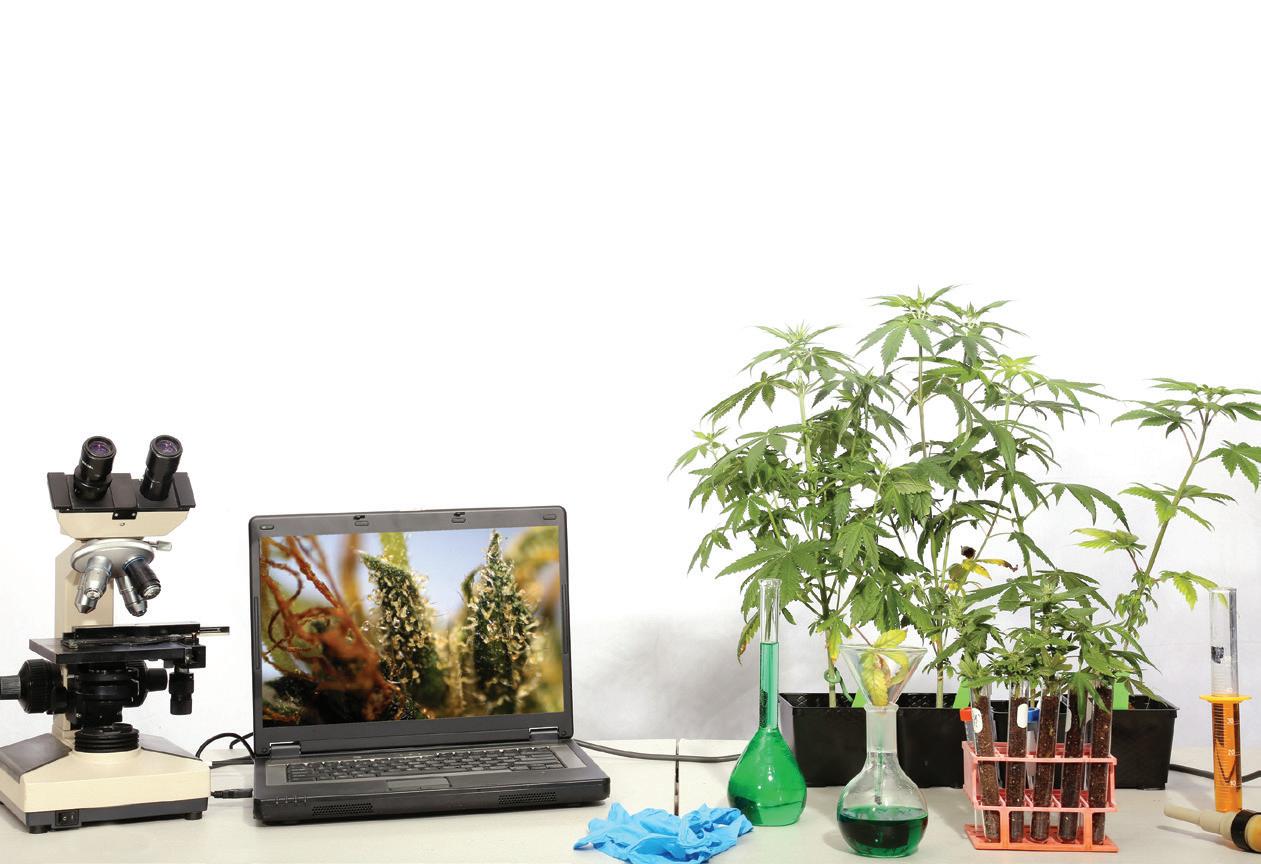
2 minute read
RESEARCH CORNER
COLLECTED BY MATT JACKSON, PHD RESEARCH CORNER
THE ASSOCIATION BETWEEN CANNABIS PRODUCT CHARACTERISTICS AND SYMPTOM RELIEF An app-based survey of real-world cannabis use by researchers at the University of New Mexico
Advertisement
Link: https://www.nature.com/articles/s41598-019-39462-1 Date of study: June 6, 2016 – March 5, 2018 Date of publication: February 25, 2019 How many people: 3,341 patients over 19,910 cannabis sessions
STUDY FACTS
SURVEY: ● 3,341 peopleused ReleafApp(MoreBetter, Ltd.)on amobiledevice ● Symptomsand sideeffectswererecorded beforeand after19,910cannabissessions ● Symptom severityrated on ascalefrom 0(none)to10(severe)
RELIEF AND SIDE EFFECTS WERE BROKEN DOWN BY: ● Cannabiscultivar: C. indica, C. sativa, hybrid ● THCand CBDlevelsin thecannabiscultivar ● Cannabisform: dried flower, concentrate, edible, tincture ● Inhalation by: vape, pipe, joint

MOST COMMON SYMPTOMS AND SIDE EFFECTS: ● Symptomsbeing treated: anxiety(16% ofusers), depression (10%), backpain (8%) ● Positivesideeffects: relaxed (63%), peaceful (54%), comfy(39%), chill (38%) ● Negativesideeffects: drymouth (26%), foggy(23%), unmotivated (14%) ● Sideeffectsthatcould begood orbad depending on context: high (37%), thirsty(27%)
Federal laws all but prohibit scientists from studying cannabis cultivars that have high enough potency and quality to represent the medical cannabis market. In this study, researchers used an app to crowdsource the cultivars of medical cannabis people were using, how they consumed it, for what symptoms, how well cannabis treated their symptoms, and what the side effects were.
WAS CANNABIS EFFECTIVE FOR SYMPTOM RELIEF? ● On average, peopleinitiallyreported theirsymptom severityasa6outof10 ● Symptom severitydecreased to2.5aftercannabisuse, a60% improvement
WHAT WAS THE MOST COMMON TYPE OF CANNABIS? ● 48% hybrid, 30% C. indica, 22% C. sativa ● 74% dried flower, 17% concentrate, 5% edibles, 4% tincture ● 45% vaped, 43% used apipe, 13% smoked joints

WHAT WERE THE MOST EFFECTIVE CULTIVARS AND FORMS OF CANNABIS FOR SYMPTOM RELIEF? ● C. indicawasassociated with bettersymptom reliefbutmorenegative sideeffects ● Dried flowerprovided thebestsymptom reliefand sideeffectprofile ● All methodsofinhalation provided similarsymptom relief, butvapers reported fewernegativesideeffects
HOW MUCH THC WAS IN MEDICAL CANNABIS, AND WERE THC LEVELS IMPORTANT?
● Medical cannabis had 28% THC on average
● Cannabis with more than 10–19% THC did not provide better symptom relief, except for depression
● Higher THC levels were associated with more side effects, both positive and negative
WHAT ABOUT CBD LEVELS?
● 25% of medical cannabis had <1% CBD, 67% had 1–34% CBD, and 8% had >35% CBD
● CBD levels were not associated with different symptom relief or side effects
WHAT ARE THE MOST IMPORTANT POINTS OF THIS STUDY?
● The National Institute on Drug Abuse (NIDA) federally regulates cannabis for clinical research studies
● NIDA’s most potent cannabis cultivar has 12.5% THC, most of NIDA’s “high-dose” cultivars have 5–10% THC
● In this study, medical cannabis with <10% THC was uncommon (16% of users) and least effective for symptom relief
● Crowdsourced studies can provide data to bridge the growing gap between science and the medical cannabis market

There is a mismatch between the potency of cannabis that the federal government provides for research and the commonly available cultivars of medical cannabis. This type of study fills a knowledge gap in the cannabis cultivars that people are actually using for symptom relief.










